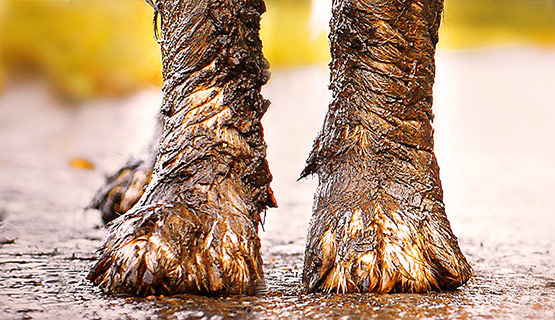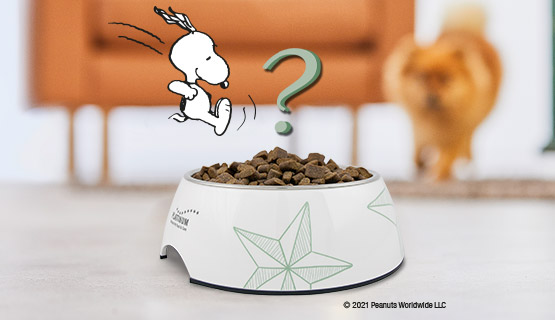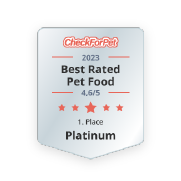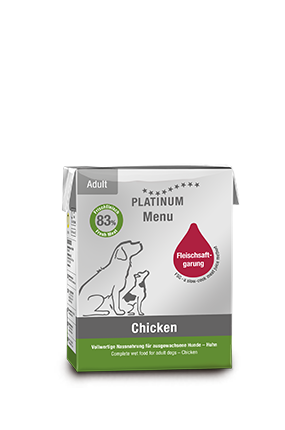 Dog food prepared with Fleischsaftgarung
Dog food prepared with Fleischsaftgarung
Product categories
News & Infos
Meat meal is produced when the nutrient-rich meat juice and the natural fat content are extracted from the fresh meat, applying high temperatures and high pressure. Meat meal is not tasty, and it is significantly less nutritious than fresh meat. That is why there is no meat meal roast on the table on Sundays and no meat meal in our dog food.
Dog food prepared with FSG (Fleischsaftgarung) is no ordinary dog food
Meat becomes more digestible by heating. Scientists of Harvard University have found out that proteins, denatured by heat, can be digested faster than raw meat. This is valid for humans as for animals. Furthermore, heating the meat kills any pathogens (germs and bacteria) that may be present, which spares the body an energy consuming defence against infection.
That is why we use fresh meat to prepare our food. The method of preparing is called FSG (Fleischsaftgarung). In this process, fresh meat is cooked only in its own meat juice, as in the kitchen. We are not talking about everyday kitchen, but gourmet cuisine, where chefs use special cooking methods to prepare meat tastier and also healthier, thanks to the meat juice. FSG combines a selection of these cooking methods to prepare a delicious and nutritious meal. Adapted to the nutritional needs of the dog, our quality food is a big step forward for the dog. The dog sees itself as a real member of the family and not as a wolf.
Industrial dry food (dog food)
Compared to dry food prepared with FSG (Fleischsaftgarung), industrial dried food is produced by extrusion, pressing or baking.
Extruded dry food (dog food)
Extruded dry food can be defined as a pasty mass of dry food ingredients which is heated applying high temperatures under pressure, pressed through nozzles and lastly dried. Meat is not the main ingredient in about half of all extruded dry dog food on the market. Extruded dried food ingredients can contain only about 25 percent of fresh meat. This is because the dry food extruder is unable to process more fresh meat without the dry food pieces croquettes falling apart again. Therefore, meat meal is predominantly used for extruded dry food (dog food). Extruded dry food always swells, sometimes more and sometimes less. Swelling dog food increases the risk of a gastric torsion in larger dog breeds.
Cold pressed dry food (dog food)
Cold pressed dry dog food is produced in a similar way to pelletised press feed, used in factory farming. Therefore, the dried food pellets for cattle and pigs, for example, look very similar to the cold pressed dried food pellets for dogs. However, dry food (dog food) is only pressed from flours such as maize meal, rice meal, rumen meal, bone meal and meat meal. Cold pressed dry food (dog food) combined with water, decomposes into flour again after about an hour. The term cold pressed dry food (dog food) also is not quite correct because animal-based ingredients, such as rumen meal, bone meal or meat meal, are also pressed. These components were produced by applying high temperature and high pressure, long before cold pressing. Tests have shown that there is also cold pressed dry feed that swell up like extruded dry feed. Consequently, in these case, cold pressed dry dog food would also pose a risk of gastric torsion in larger dog breeds.
Baked dry food (dog food)
Baked dry food can be produced with a high percentage of fresh meat. However, the ingredient dough of baked dry food (dog food) is heated longer than the extruded dry food (dog food). Tests have shown that there is also baked dry feed that swells up like extruded dry feed. In this case, baked dog food would also pose a risk of gastric torsion in larger dog breeds.
Industrial wet food (dog food)
Wet food is mainly available in cans, bowls or pouches. There is one similarity between all of them: cans, bowls or pouches filled with raw mass are cooked for over an hour to produce wet food (dog food).
We imagine wet food as meat we know it from the kitchen, which is cooked best in its own juice and combined with a little vegetable, potato, or rice. But this is not wet food, it is wet nutrition. Wet food (dog food) only pretends to be like wet nutrition (dog food). In fact, a variety of ways are applied by wet food suppliers to make wet food look like wet nutrition (dog food). There is wet feed (dog food) that appears as pieces of meat. Often there are animal by-products as an essential ingredient in the wet food. It is not uncommon that there is water added in order to increase the volume. You can recognise wet food which is watered down by a moisture level close to 80%. Wet food diluted with water often needs odour ants and flavour enhancers to become attractive to dogs. In addition, wet food to which water has been added requires the dog to consume bigger quantity to satisfy its nutritional requirements. Such a wet food puts more strain on the stomach and digestive system than natural wet food.
Transparency in dog food prepared with FSG (Fleischsaftgarung)
In a world full of attractive advertisement, we want to keep our word. That is why we have commissioned TÜV SÜD ELAB (now ELAB Analytik GmbH) to test our dog food prepared with FSG (Fleischsaftgarung) regularly and independently and asked them to publish all test parameters online for everyone to see.
- Checks are made to ensure that the specified amount of fresh meat is actually used in the preparation with FSG.
- It is checked whether the declaration is correct.
- Checks are made to ensure that the dog food prepared with Fleischsaftgarung (FSG) is safe and does not contain contaminants such as germs and bacteria (Enterobacteriaceae, E. coli, presumptive Bacillus cereus, Staphylococci, Clostridium perfringens and Salmonella), yeasts/moulds, heavy metals and mycotoxins.
Find more Information: www.elab-analytik.de/platinum-english/









.png)
.png)

.png)